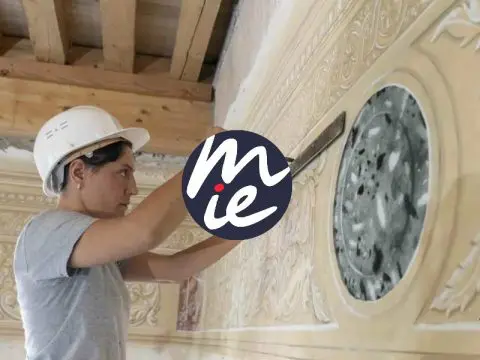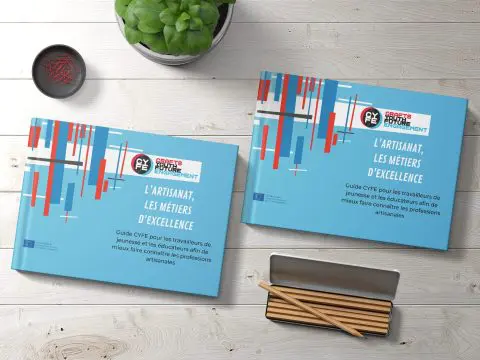The tragic conflict in Ukraine has been evolving for more than one year. We wish to support Ukrainians by keeping in mind the huge impact it had and still has on craft businesses. Therefore Mad’in Europe conducted a qualitative survey among 100 Ukrainian craftspeople in May 2022 and May 2023.
“The war in Ukraine, of course, affects everything: instability of supplies, logistical problems, power outages, reduced purchasing power, and the inability to predict anything”. How could they deal with such instability, which effects did the war trigger in terms of sales and supply chain? What are their aspirations and what do they deplore?
Each answer was unique, however we summarised the main trends through this article which also intends to be an anthem of hope for the preservation of Ukrainian identity. Ukrainians are conscious that their expression of belonging to their Nation also passes through these traditional crafts as for instance the Vyshyvanka and other traditional embroidered clothes. Hence, the current situation has led to many obstacles but also opportunities for the sector. “Certain obstacles have appeared in my craft, but new opportunities have also arisen” We will guide you through the main trends and wishes that came out of the answers we collected.

For privacy reasons the real names of interviewed people have been changed. We wish to thank all of them for their precious collaboration.
The cultural sector as a target
Many craftspeople are still experiencing the fact that cultural heritage becomes hostage in case of conflict and that the identity of a people can be threatened in all its manifestations by the belligerent. Many local history museums for example have been destroyed during the shelling and occupation. For the craft sector it is the same. “Craftsmen are on the verge of survival” one exclaimed to express the huge impact the war is having on their sector. Another affirmed that “everything that emphasises Ukrainianness is under mortal threat”.

The population is consequently becoming more aware about the country’s heritage however trade routes are destroyed, cultural fairs and events are on hold. “I really hope that when the explosions in the country subside, my fairy tales will return”. “It’s hard to be creative when rockets are constantly flying”: their creativity is harmed by their constant worrying about safety and survival and therefore preserving culture in such conditions is very difficult. Moreover the men are sacrificing their lives at the front and hence many masters cannot deal with their businesses themselves.
Support & attention from the international community
The war has drawn increased attention from the international community towards Ukrainian culture including traditional crafts. This was considered as an opportunity for them, namely for specific crafts and symbols such as embroidery in which they hold an unparalleled abundant tradition. Hence craftspeople are aware that they need to seize this critical moment to their full advantage. On this occasion, one of them embroidered a Ukrainian mapas a way to engage for identity and cultural heritage. Many of them are hoping and expecting to attend international fairs, conferences and to network with European communities and European handmade shops as a way to rebound and to show their culture to the world.

“I dream that the whole world will learn about Ukraine and its talented people! To acquaint foreigners with our centuries-old traditions, crafts, culture and history.” Some also rely on international support such as the creation of a duty-free zone as a way to counterbalance the lack of national support that they deplore. They claim economists’ and lawyers’ help as well. They do not neglect that despite this higher demand from abroad, they are going through hard times and are not always in the position to sell abroad.
The affected supply chain: materials & tools
The war is depleting the country’s economy leading shortages of materials and tools and increased prices. For embroidery for instance, most of the materials are imported and as in some cases it was imported from the belligerent side, the embroiderer had to adapt and find suppliers in other countries. With the rise in the exchange rate, all prices for raw materials have increased. “I can already feel the absence of some items of threads and fabrics in shops and online stores. Some previous models cannot be repeated, there is a lack of variety of colours and thread assortment.” stated Olga.

Craftsmen also faced the problem of transporting their finished work, their tools and machines as well as the materials needed to work as many were forced to leave their homes. The difficulty of purchasing materials has therefore encouraged some craftspeople to upcycle more using fabrics’ leftovers or to shift to more local materials rather than materials imported from abroad. Nataliia, an embroiderer for instance, can’t repeat some of her models as “filo di scozia” could not be imported anymore. A similar situation was reported for linen and hemp. Juliia, claimed that the metal supply of her workshop was destroyed and this impacted the electrical fittings of the decoration objects she produces. Olga, a tapestry maker, had to adapt to the significant decrease of high-quality wool production in Ukraine. “There is a threat of losing orders due to the lack of the right fabrics. Or the quality of the embroidery may be reduced and I may use an overlay canvas, which is not typical for me.” expressed another embroiderer. Others could not implement their training programs due to missing materials. Many of the interviewed crafts professionals managed to adapt themselves either by ordering material online from abroad, by recycling or by turning to local Ukrainian production materials, showing a great capacity of resilience and adaptability.
A sample of 22 craftspeople from different sectors provided us with the following results on their supply chain in May 2023:

The impact on craftspeople’s sales
When it comes to sales, we could guess that the latters dropped significantly that as the general population’s purchasing power decreased. One of the craftspeople interviewed indeed stated that “the purchasing priorities of the majority of the population have significantly shifted towards basic necessities” thus leading to a decreased demand for their products. However the persistence of war didn’t mean that all of them stopped selling. On the contrary, some reinvented themselves by selling online (some had to rely on Etsy, an online marketplace), or turned to training activities to generate side income.
Positive examples are illustrated through the words of Katarina “The current situation in Ukraine contributes to the flourishing, interest and development of traditional Ukrainian crafts. My jewellery is currently in even greater demand than before the war.” or through the words of Olena who started transmitting her know-how and passion for felting to other resettled girls who became interested in her craft. Olena did so as a volunteer but her apprentices started selling online the outcomes of their training. Others unfortunately had to stop training because of the increased rental cost of their workshops spaces.

Resilience of craftspeople as a way to preserve national identity
According to our interviewed craftspeople, crafts can play a key role in helping to survive in times of war overall as unemployment is threatening a large part of Ukrainians. As men are at the front, women are of course the first victims of this unemployment threat. “It is key to preserve and pass on to future generations traditional construction technologies, to teach youth, to motivate them to embark on our beloved profession. This is our future, this is our history and our foundation.” declared Victor. This period of national consciousness in Ukraine is also a period in which Ukrainians rediscover their traditional folk crafts as embroidery and their history as a way to identify to the Ukrainian nation and its independence. Many craftspeople had the resilience and the courage to reinvent themselves by holding master classes among migrants, by organising charity fairs, sales, and actions of their products also in some cases for the benefit of the Armed Forces of Ukraine.
“Personally, having experienced shock and fear during the two weeks since the start of the war in Ukraine, I decided to create even more and help others with my creativity.” By continuing to work and create, craftspeople all over Ukraine found the strength to go through these hard times and inspire other people. “The ability to do something with one’s own hands saves people’s psyche. People need the healing power of art now.”





